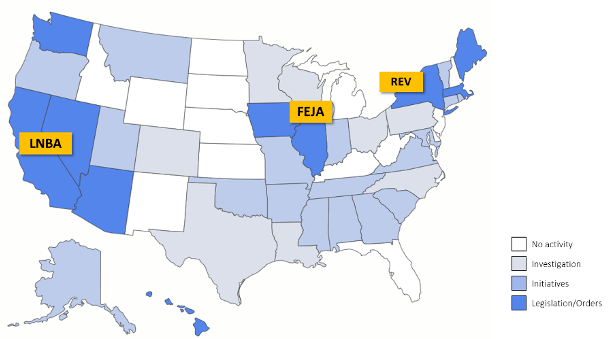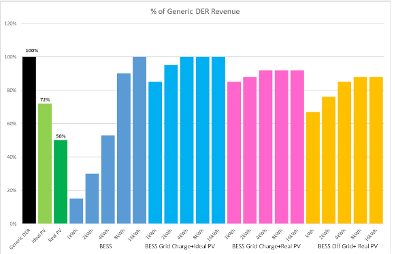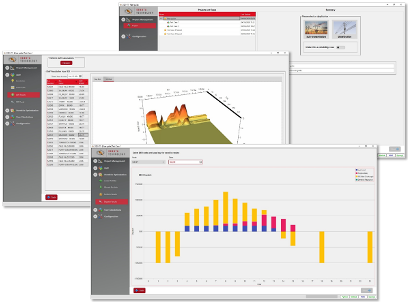An Analytic Framework for Evaluating the Value of Distributed Energy Resources
Need for Distributed Energy Resources Valuation is Propagating Nationwide
Multiple state initiatives exist for establishing valuation of distributed energy resources (DER), most notably the California Locational Net Benefits Analysis (LNBA), NY Renewed Energy Vision (REV) and Illinois Future Energy Job Act (FEJA) and NextGrid. Existing Frameworks have not shown how to calculate the value of DER on a feeder-node based locational and temporal basis in terms of grid avoided costs, especially on sub-transmission and distribution systems.

This gap has been addressed by a theoretical and engineering framework that enables the calculation of the locational marginal value (LMV) of incremental kW and kVAr of DER injection on a locational and hourly basis. This approach has been adopted by several utilities in multiple jurisdictions. This document provides a summary of the theoretical framework, Quanta Technology’s proprietary DER Valuation Tool (DERVT), and a discussion of the practical and policy questions around implementation.
Locational Marginal Valuation Framework
The LMV framework has three key steps. The first is to understand what forecast capacity, power quality, or reliability needs drive planned grid investment and what that costs. The details of what station and circuit apparatus exhibits thermal overload, under or over voltage, or what circuit sections exhibit reliability issues on an 8760-hour basis are used to allocate the planned investment costs to the elements over time. The second step is to calculate the sensitivity of those conditions – amps, volts, to injections of kW and kVar at each circuit location (as granular as each service transformer). The product of the allocated costs per element times the sensitivity, summed back to each circuit location produces the LMV of real power (LMV-P) and of reactive power (LMV-Q).
The LMV expresses the locational value of a real or reactive power injection at each hour in terms of their marginal impact on all the capacity costs for all violations needing corrections in that hour. The concept is very similar to the “locational marginal price” concept in markets and can be derived in a similar way as the shadow cost of a constraint. The key difference is that instead of being an energy-clearing price, it is the marginal effect of the cost of capacity.

At each hour, the marginal value of a kW or kVar at each location is calculated in terms of avoided grid costs. The framework is unique in being able to deal with AC analysis, over and under voltage, and the value of kVar as well as kW.
 The locational and temporal profile of LMV values can be used to evaluate DER technologies by comparing their profiles, including operational flexibility, against the DER profile. The bar graph illustrates how different combinations of PV and storage can realize the full value of grid services exemplified in the LMV. Another possibility is to select a portfolio among differing options, considering technology capital and operating costs as well as power flow, grid and DER constraints and (potentially) DER siting constraints.
The locational and temporal profile of LMV values can be used to evaluate DER technologies by comparing their profiles, including operational flexibility, against the DER profile. The bar graph illustrates how different combinations of PV and storage can realize the full value of grid services exemplified in the LMV. Another possibility is to select a portfolio among differing options, considering technology capital and operating costs as well as power flow, grid and DER constraints and (potentially) DER siting constraints.
DER Valuation Tool (DERVT)
 Quanta Technology has developed a proprietary software tool based on this framework. The tool is an A-to-Z approach starting from the integration with existing distribution and transmission planning tools, calculating the LMVs and optimizing DER portfolios for sub-transmission or distribution capacity deferral and reliability, for distribution voltage control and renewable integration. Furthermore, the tool encompasses a benefit-cost analysis, comparing DER solution costs to traditional gird investment costs, in terms of total grid and non-grid benefits.
Quanta Technology has developed a proprietary software tool based on this framework. The tool is an A-to-Z approach starting from the integration with existing distribution and transmission planning tools, calculating the LMVs and optimizing DER portfolios for sub-transmission or distribution capacity deferral and reliability, for distribution voltage control and renewable integration. Furthermore, the tool encompasses a benefit-cost analysis, comparing DER solution costs to traditional gird investment costs, in terms of total grid and non-grid benefits.
Implementation Aspects
The following practical and policy issues still need to be addressed when implementing these solutions:
- Availability of data: Distribution planning is unaccustomed to 8760-hour analyses and models. Data to support such analyses require substantial clean-up and preparation. Hourly load and existing DER profiles affect the locational value. The incorporation of AMI data (if available) is a key step in the process.
- Planning horizon for evaluation: Deciding the timeframe over which the DERs will be evaluated is a key decision, impacted by the difference in grid asset lifetimes (order of 40 years), DER lifetimes (order of 10-20 years) and capacity planning horizons (order of 5 years).
- Integration into planning: Seamless integration of DER valuation and procurement into traditional distribution planning is not easy and must consider data/model exchange and timeline coordination. The Quanta tool helps facilitate solutions to these problems.
- DER compensation: Compensation timing (upfront v. annual) and how to fairly compensate new v. existing DER is important to consider.
- DER procurement: This framework can be used to inform and evaluate the design of various DER procurement mechanisms from tariff-based incentives administered by the utility to capacity auctions.
- DER operations: Mitigation measures should be considered in case DER fails to provide needed grid services.
